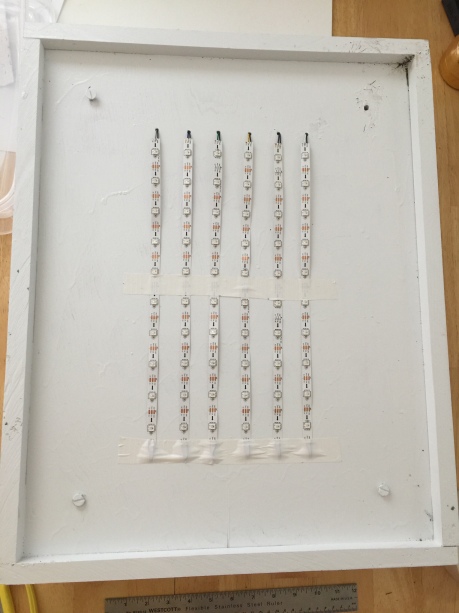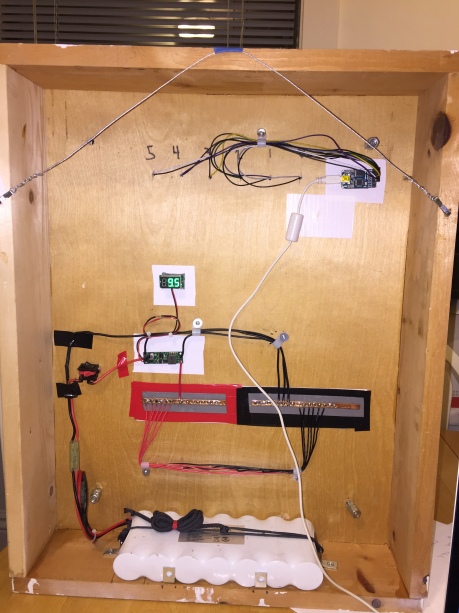The LEDs are really bright, which could be irritating. We need to see what the video feed looks like, but I’ve been thinking a bunch about how to spread the light from each pixel into a blurry blob. Or, even better, smear the light into a blob that somehow changes.
Earlier diffusers were either crappy looking or too heavy; I loved how the translucent rocks look, but they would be ridiculously heavy. Photo diffusion paper looks good, and so do sheets of HDPE cut out of shopping bags, but they’re flat and static.
What if we had HDPE bags crumpled on thin rods, like a trash skewer on a BBQ. With a diffuser on top, the bags would cast irregular and moving shadows on the top diffuser. Like this:
So my current idea is to drive say 10 rods, each with a stepper motor, with all the motors driven by a Pololu Maestro. We’ll probably control the Maestro with python (as in this example). An example of a full pytohn-on-Pi-Maestro-servo setup is here.
I don’t quite understand yet how to chain the motors to the rods. However, turning them slowly, and having them stop for long periods, might make the effect all the more interesting.
For the future: a python library to talk to the Pi’s GPIO pins is here.






